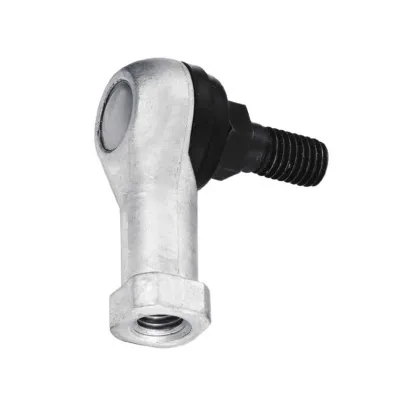Understanding Ball Joints: The Unsung Heroes of Suspension Systems
2024-11-01
When it comes to automotive maintenance and repair, many components play crucial roles in vehicle performance and safety. Among these, ball joints are often overlooked but are essential for ensuring smooth handling and stability. In this blog, we’ll explore what ball joints are, how they function, their types, signs of wear, and the importance of regular maintenance.
What is a Ball Joint?

A ball joint is a spherical bearing that connects the control arms of a vehicle’s suspension system to the steering knuckles. This connection allows for smooth movement and articulation of the vehicle’s wheels while maintaining alignment. Essentially, ball joints act as the pivot point, enabling the wheels to move up and down while also turning left and right.
How Ball Joints Work
Ball joints consist of a ball encased in a socket, allowing for multidirectional movement. This design is crucial for a vehicle's suspension system, as it absorbs shocks from the road and enables the wheels to adapt to uneven surfaces. When you drive over bumps or turns, the ball joints facilitate the necessary movement to keep your tires in contact with the road, enhancing stability and control.
Types of Ball Joints
There are two primary types of ball joints, each serving a specific purpose:
1. Upper Ball Joints: These are located on the upper part of the suspension system and are responsible for connecting the upper control arm to the steering knuckle. They play a critical role in steering and suspension alignment.
2. Lower Ball Joints: Positioned at the bottom of the suspension system, lower ball joints connect the lower control arm to the steering knuckle. They bear much of the vehicle's weight and handle significant forces during acceleration, braking, and cornering.
Signs of Ball Joint Wear
Like all mechanical components, ball joints can wear out over time. Recognizing the signs of wear early can prevent further damage to your vehicle’s suspension system. Common symptoms of worn ball joints include:
- Uneven Tire Wear: If you notice that your tires are wearing unevenly, it may be a sign of a bad ball joint affecting alignment.
- Steering Issues: Difficulty steering or a feeling of looseness in the steering wheel can indicate worn ball joints.
- Clunking Noises: Hearing clunking or popping sounds when driving over bumps or during turns is a strong indicator that your ball joints may need attention.
- Vibration: Excessive vibrations in the steering wheel while driving can also suggest ball joint problems.
Importance of Regular Maintenance
Maintaining your ball joints is crucial for overall vehicle performance and safety. Regular inspections, especially if you notice any of the symptoms mentioned above, can help catch issues before they escalate. Here are a few maintenance tips:
- Visual Inspections: Periodically check the condition of your ball joints for signs of wear, rust, or damage.
- Lubrication: Many ball joints are equipped with grease fittings. Regularly lubricating these fittings can extend the life of the joints.
- Alignment Checks: Have your vehicle’s alignment checked regularly. Misalignment can place undue stress on ball joints and lead to premature wear.
- Professional Inspections: If you’re unsure about the condition of your ball joints, have a professional mechanic inspect them as part of your vehicle's routine maintenance.
Conclusion
Ball joints may not be the most glamorous components of a vehicle, but their importance cannot be overstated. They are vital for maintaining proper suspension function, steering control, and overall vehicle safety. By understanding their role, recognizing the signs of wear, and committing to regular maintenance, you can ensure a smoother, safer ride for years to come. Whether you’re an avid DIYer or prefer professional assistance, keeping an eye on your ball joints is an essential part of responsible vehicle ownership.

